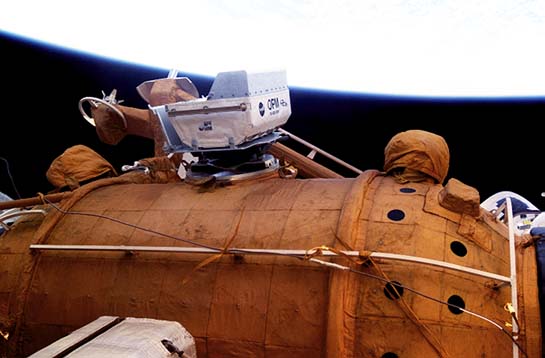Optical Properties Monitor - Overview

Optical Properties Monitor - Overview
The OPM contained three instruments that measured how various materials samples deteriorate in space. All three of the instruments worked by measuring optical properties; that is, how the materials transmit, absorb, or reflect light. Optical properties measurements have an advantage over other types of measurements that involve physical contact: they don’t touch or disturb the sample. At regular intervals (approximately one week), the OPM took measurements on the samples and produced a data file for downlink to Earth; the rest of the time, it exposed the samples and waited in a passive mode until the schedule again called for measurements.
What did the OPM look for? It looked for changes in materials that are caused by exposure to the various factors of the space environment: vacuum, extreme hot and cold, solar radiation (light and charged particles), reactive ions from the upper fringes of Earth’s atmosphere, and contaminants from the spacecraft.
These changes include: color changes, darkening (which is particularly bad because it causes the material to absorb more solar radiation, raising its temperature and making the darkening worse), flaking, surface roughening, and spalling. These are all indications that the material is being physically or chemically altered by the space environment, and may indicate that the material is unsuitable for use in building spacecraft.
A critical aspect of the OPM’s operation was its package of environmental monitoring instruments. These continuously monitored the space environment around the OPM, so that when scientists examine the sampled measurements, they know what kind of conditions the samples were actually exposed to during the exposure interval. The space environment near a spacecraft can be effected significantly by variations in solar activity (including sunspots and flares), the orbit parameters of the spacecraft, and operations on board the spacecraft (such as water dumps and gas venting). Every fifteen minutes, the OPM took measurements on solar radiation, atmosphere components, and the amount of heat being absorbed by selected samples.